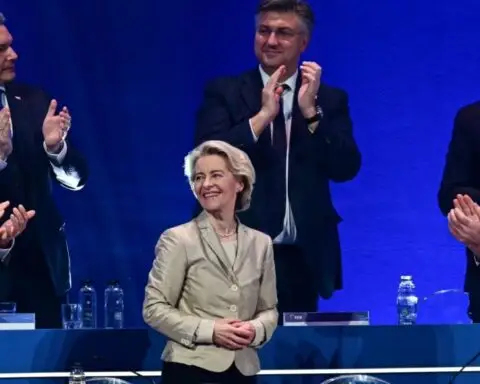But, unlike last year, safe and effective vaccines are now available. While the pace of vaccination is still slow, an end to the pandemic is in sight.
Reflecting the periodic infection waves and the pace of vaccinations, the economic recovery in Europe is still halting and uneven. While industrial production has returned to pre-pandemic levels, the service sector is still contracting.
While the pace of vaccination is still slow, an end to the pandemic is in sight.
However, looking ahead, we project that Europe’s economic growth will rebound by 4.5 percent this year. Assuming that vaccines become widely available this year and throughout next, as still expected, growth is projected at 3.9 percent in 2022. This will bring Europe’s output back to its pre-pandemic level but not to the path expected before the pandemic.
Virus mutations and vaccination delays are the prime concern at this time. The biggest worry over the medium term is economic scarring—output that never recovers because people who lost jobs during the pandemic cannot find new ones. This can happen because gaps witnessed in education and worker training are never recovered, deferred productive investment remains shelved, or resources remain in declining sectors rather than shifting to expanding ones.
Against this backdrop, the number one priority is to boost vaccine production. This is critical not only for Europe but also the world because Europe is a hub for vaccine production and exports. Investing in such an effort will pay off. Of course, faster vaccine production will need to be coupled with national efforts to quickly distribute these vaccines, getting them out of factories and to people.
The way out
At the same time, policymakers need to continue supporting the economic recovery. The faster the recovery, the less scarring experienced by people and businesses. And fiscal policy needs to play an increasing role for economies where monetary policy—with interest rates at their lowest—becomes less effective in boosting output.
But the nature of support will need to shift:
- Labor market policies have provided unprecedented lifelines to the unemployed or underemployed. At their peak, job retention policies supported 68 million jobs. These should remain in place while economic activity remains soft but should gradually shift toward helping workers find new opportunities in emerging sectors. Some examples include policies that promote job search, enhance training and reskilling programs, and provide well-targeted hiring subsidies.
- Corporate sector support policies should become more targeted toward viable firms and focus on strengthening firms’ solvency instead of simply providing liquidity. Based on data available through the fall of 2020, we estimate that viable firms will require an increase in equity equivalent to 2-3 percent of GDP to remain solvent, with 15 million jobs at risk.
- Financial policies should continue to enable banks to keep credit flowing. However, going forward, nonperforming loans need to be adequately provisioned, while banks are given time to replenish capital buffers as crisis measures expire.
A fiscal booster shot
In our latest Regional Economic Outlook Update for Europe, we analyze the impact of additional fiscal measures to support such a shift in policies. These measures could include additional transfers targeted at households in need, hiring subsidies to reintegrate the unemployed faster, temporary investment tax credits to bring forward private investment, and equity support schemes for viable firms in need of capital. This is not a call for a package that boosts spending indiscriminately and permanently, but for a well-targeted and temporary shot in the arm of both demand and supply.
We find that this additional support—set at a level of 3 percent of GDP over 2021−22—could lift GDP by about 2 percent by the end of 2022. Over the medium term, the robust supply side effects of these measures would cut the impact of scarring by more than half. The costs would pale in comparison to the benefits. This package of measures would also offer greater help for low-income households and would entail fewer side effects than additional monetary stimulus. Moreover, it would bring inflation closer to target in many countries and help rebuild monetary policy space.
Finally, fiscal support should also be redeployed to accelerate the transformation of the economy, including through infrastructure investment, especially in green and digital technologies. The European Union has broken new ground with the creation of the Next Generation EU plan, which will provide centralized support to member states—over half in the form of grants. This program will accelerate growth and increase productivity, especially if coupled with growth-enhancing structural reforms.
In short, with hard work on vaccine production and distribution, continued support for lives and livelihoods, and innovative policies to combat economic scarring, Europe can have a “V-shaped recovery” that is fairer, greener, smarter, and more resilient.






